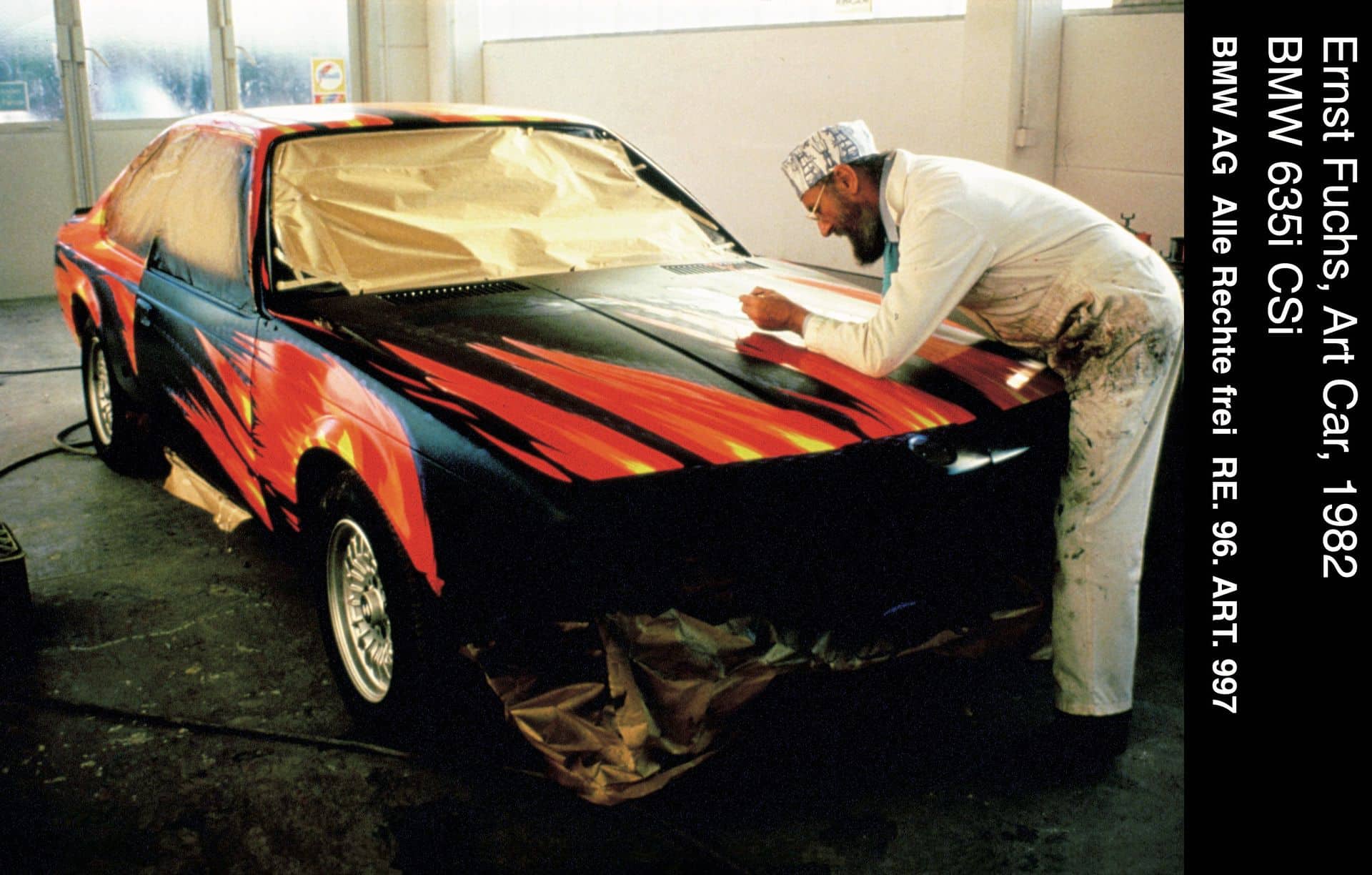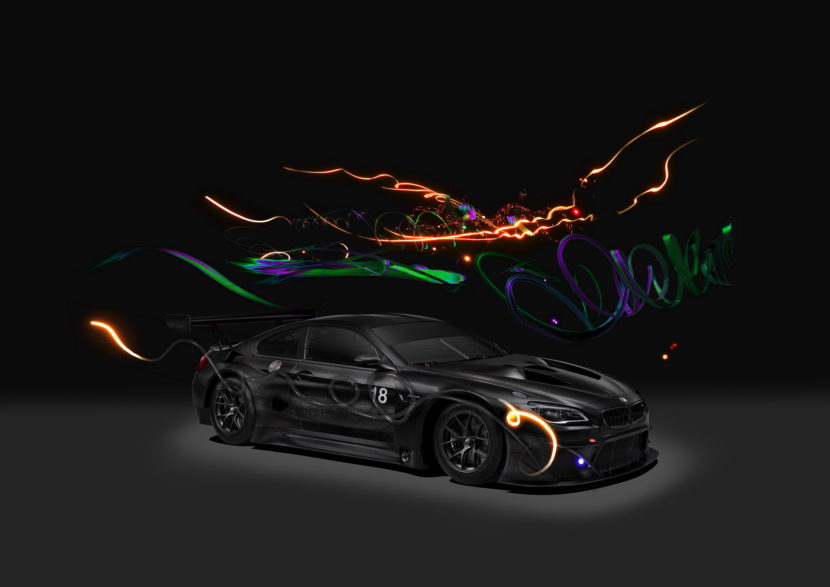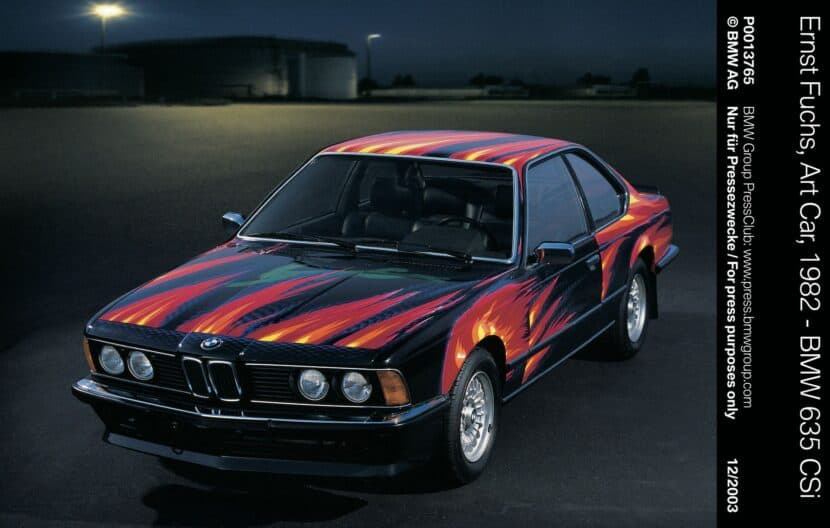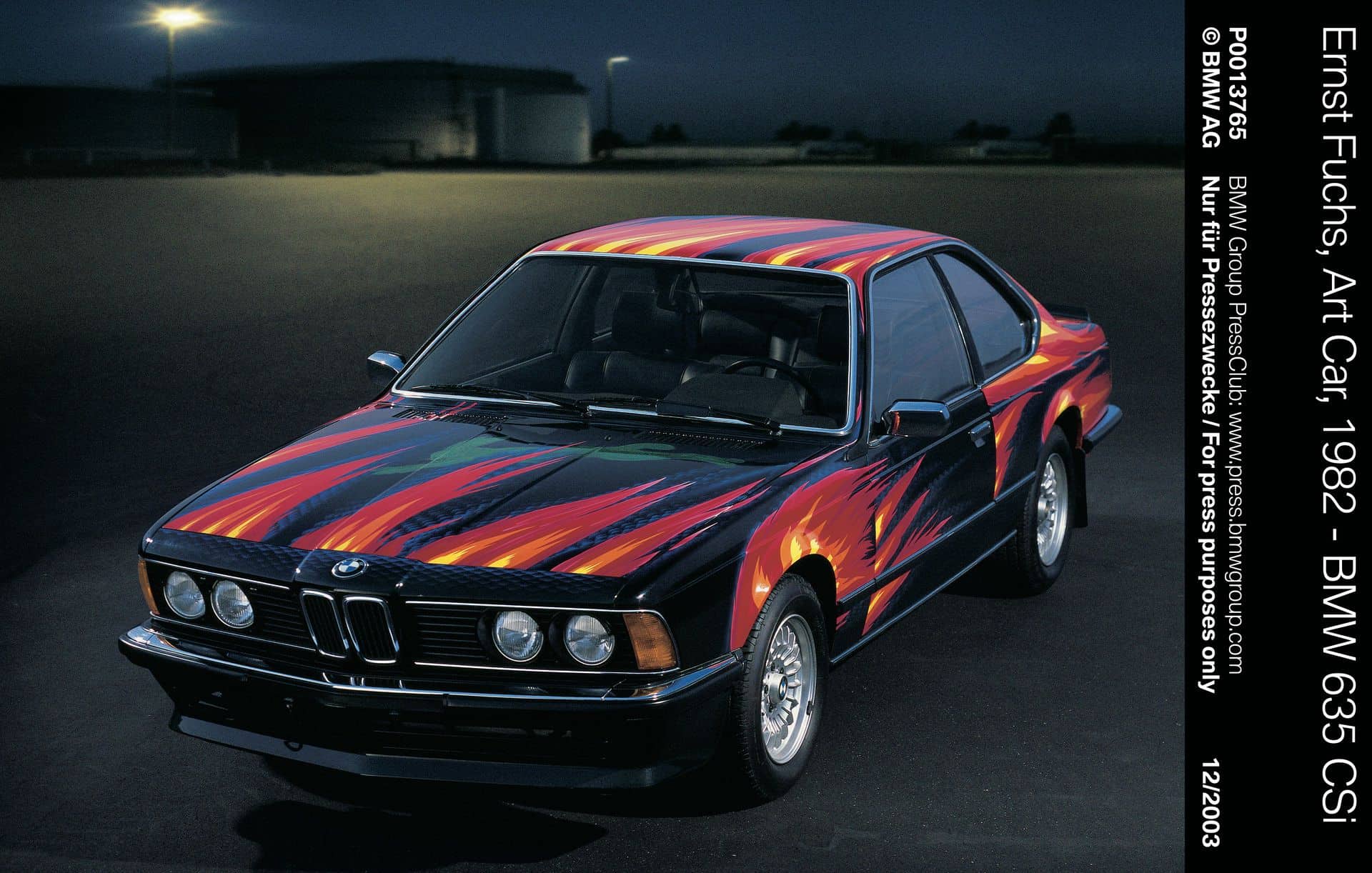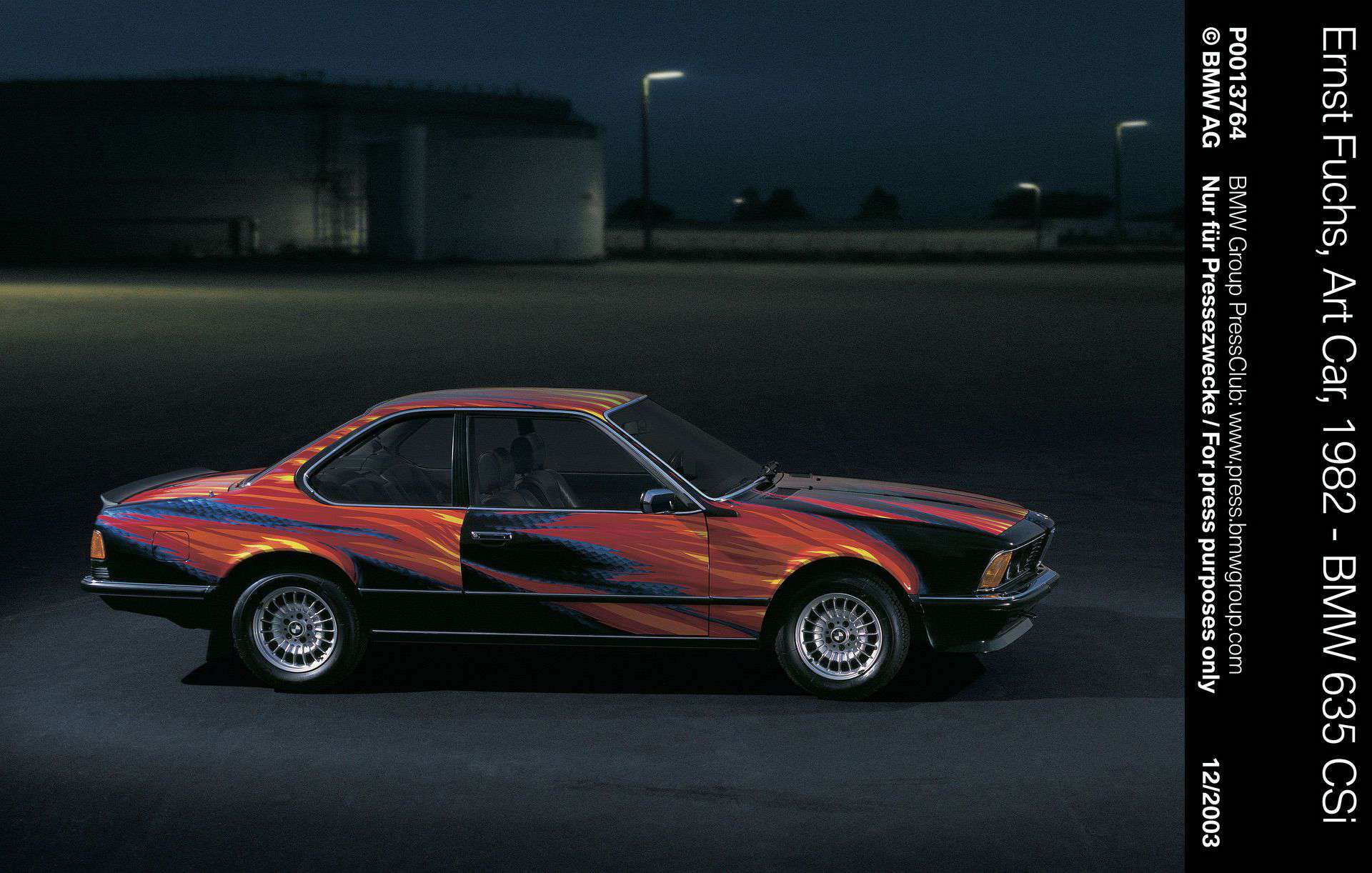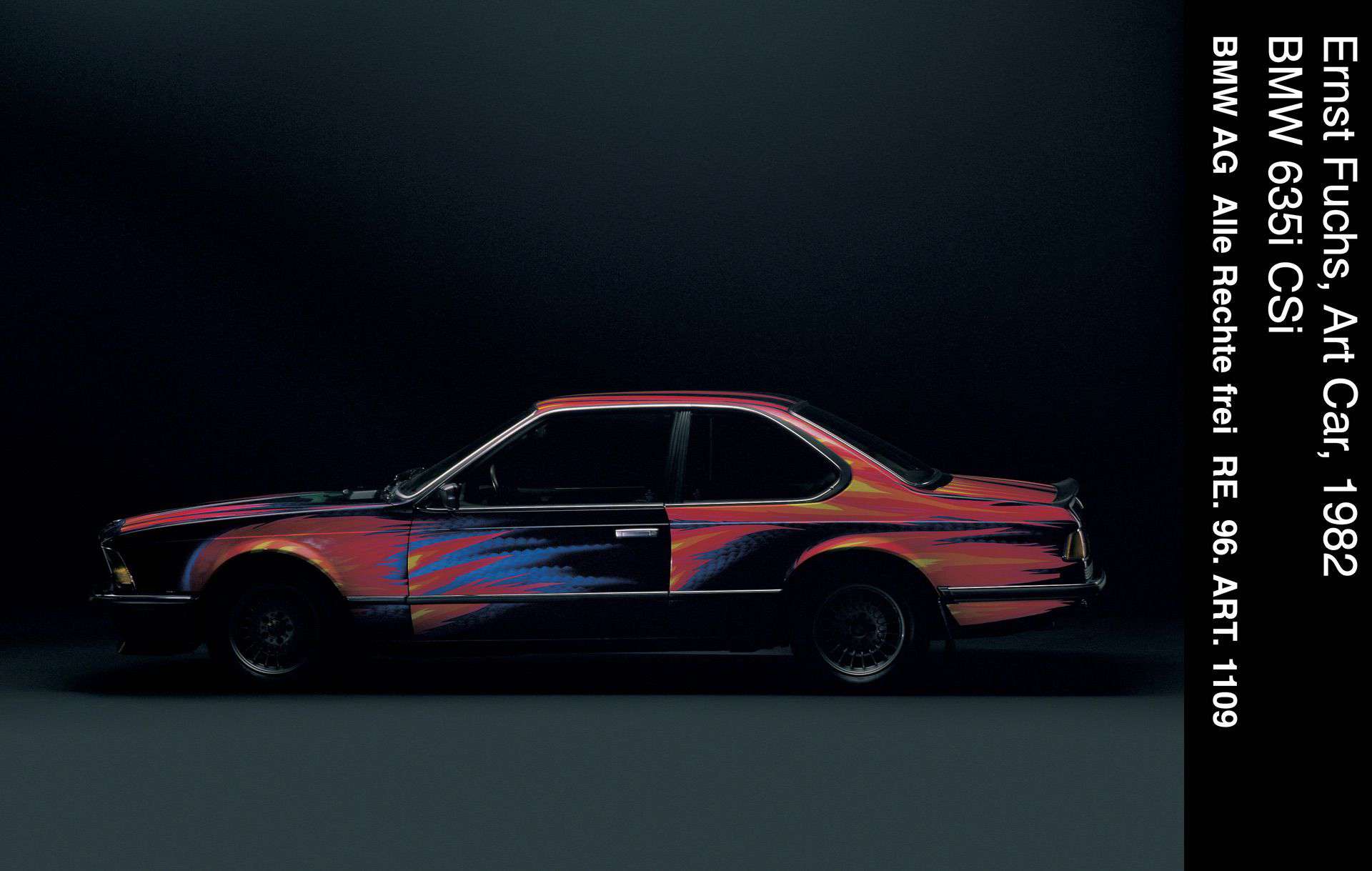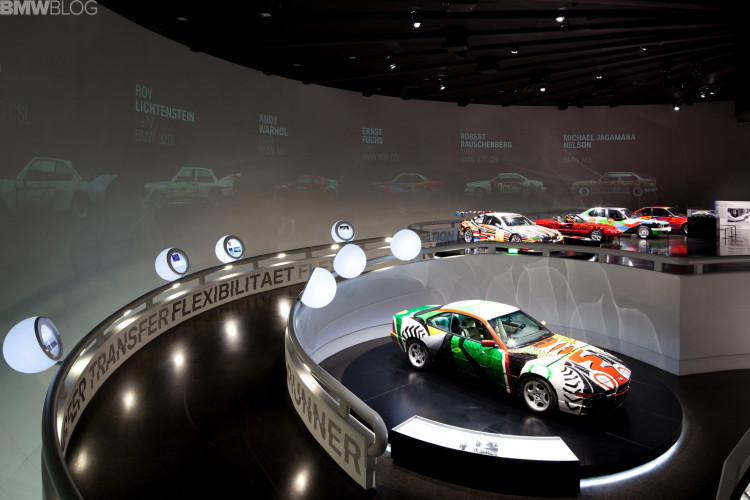We already looked at some of our favorite BMW Art Cars. But what about the ones that sometimes get forgotten about? With nearly twenty cars spanning five decades, it’s easy to lose track. Here are some of the Art Cars you might have missed. Since 1975, nineteen BMW Art Cars have been created – each one a unique piece. Number 20 will soon follow in 2024, designed by Ethiopian painter Julie Mehretu.
Olafur Eliasson’s BMW H2R
Certainly one of the more obscure cars—Art Car or otherwise—in the BMW history books, the H2R is a hydrogen-powered race car. It makes sense, then, that Eliasson focused on a message of sustainability. An already absurd-looking vehicle, Eliasson chose to remove the vehicle’s alloy body and replace it with interlocking steel bars. Then, layers of ice—which required 530 gallons of water—were applied. But the outlandish design of the Art Car not only sent a crystal-clear message of the vehicle’s chosen propulsion method. Like the other Icelandic-Danish artist’s sculptures, it’s a dramatic tour-de-force relying on light, water, and air temperature to create a unique experience. He was a perfect match for a race car powered by a 6.0-liter hydrogen V12.
Cao Fei’s BMW M6 GT3
One of the most recent Art Cars is also one of the most misunderstood. The 2017 BMW M6 GT3, by itself, is virtually untouched from its original, black paint. When viewed through the correct app, the artwork springs to life. Cao Fei relied exclusively on augmented reality to get her message across.
Though completed over six years ago, the eighteenth Art Car is perhaps one of the most relevant today. Fei succeeds in blending the digital and physical world – today, one of BMW’s cornerstones of design (“digitalization”). Cao Fei’s Art Car comprises three pieces: a video documenting a time traveler, the swirls of color accompanying the M6 GT3 when viewed through AR, and the car itself. Therefore, one of the most deceptively simple Art Cars is actually one of the most complex yet.
Ernst Fuchs’ BMW 635CSi
“Fire Fox on a Hare Hunt” is the name of the fifth-ever BMW Art Car. It’s the first one based on a roadgoing vehicle and the first intended for exhibition purposes. Fuchs’ choice to cover the E24 6 Series in flames was an interesting one. The artist generally stuck to religious themes and mysticism; his Art Car feels quite removed from those themes. Apparently, Fuchs was inspired by a dream he had when he was five and shaking the affects of a general anesthetic. He describes a flash of lightning striking near a vehicle. Then, a sensation of speed. “This desire to transcend time and space – all these and many other sensations guided me while painting the BMW Coupe,” he said.
David Hockney’s BMW 850CSi
The fourteenth Art Car took months to complete. The artist, David Hockney, set out to give onlookers a sensation of what was going on inside the vehicle. So, on the door, you can see the outline of a driver at the wheel, with a small dog in the back seat. But Hockney went even further, attempting to depict engine components at work on the hood and front fenders. Some of this Art Car’s less readily discernible features are also explainable. “Traveling around a car means experiencing landscapes,” Hockney said. It’s suggested that the abstract shapes are reflected scenery as the vehicle makes its way down the road. The 850CSi had a short production run of just 1,510 units – making this vehicle one of the most special Art Cars ever.
Michael Jagamara Nelson’s BMW M3
When people think of an E30 M3 Art Car, they usually think of the multicolored pink-bumpered version that Ken Done completed. Nelson’s vehicle was the predecessor, but the two couldn’t be more wildly different. Both Australian artists drew upon their homeland for inspiration. Done went with colorful parrots and parrot fish. “I have painted parrots and parrot fish. Both are beautiful and able to move at fantastic speeds. I wanted my BMW Art Car to express the same qualities,” he said. But Nelson went in another direction, instead drawing on the region of Papunya and applying a series of symbols and picture forms to the E30 M3’s body.
This collection of symbols and pictures is part of the indigenous Australian’s culture. Papunya paintings are understood as aerial views of a landscape, incorporating empirical elements like water alongside more abstract concepts from the people’s religion. “The car is a landscape as if viewed from an airplane – I have included water, the kangaroo and the possum,” Nelson said. Despite the ideological complexity, the seventh BMW Art Car was completed in just seven days. The artist’s name is proudly emblazoned across the lower side skirt.
Which Art Cars Did We Forget?
Did we omit your favorite art car? Let us know in the comments below. Honorable mention goes to Esther Mahlangu’s E34 5 Series. Since it just received an homage via the BMW i5 Flow NOSTOKANA, it didn’t feel right to include it in this list. It would be nice to see similar projects in the future – especially for some of the most iconic designs.


